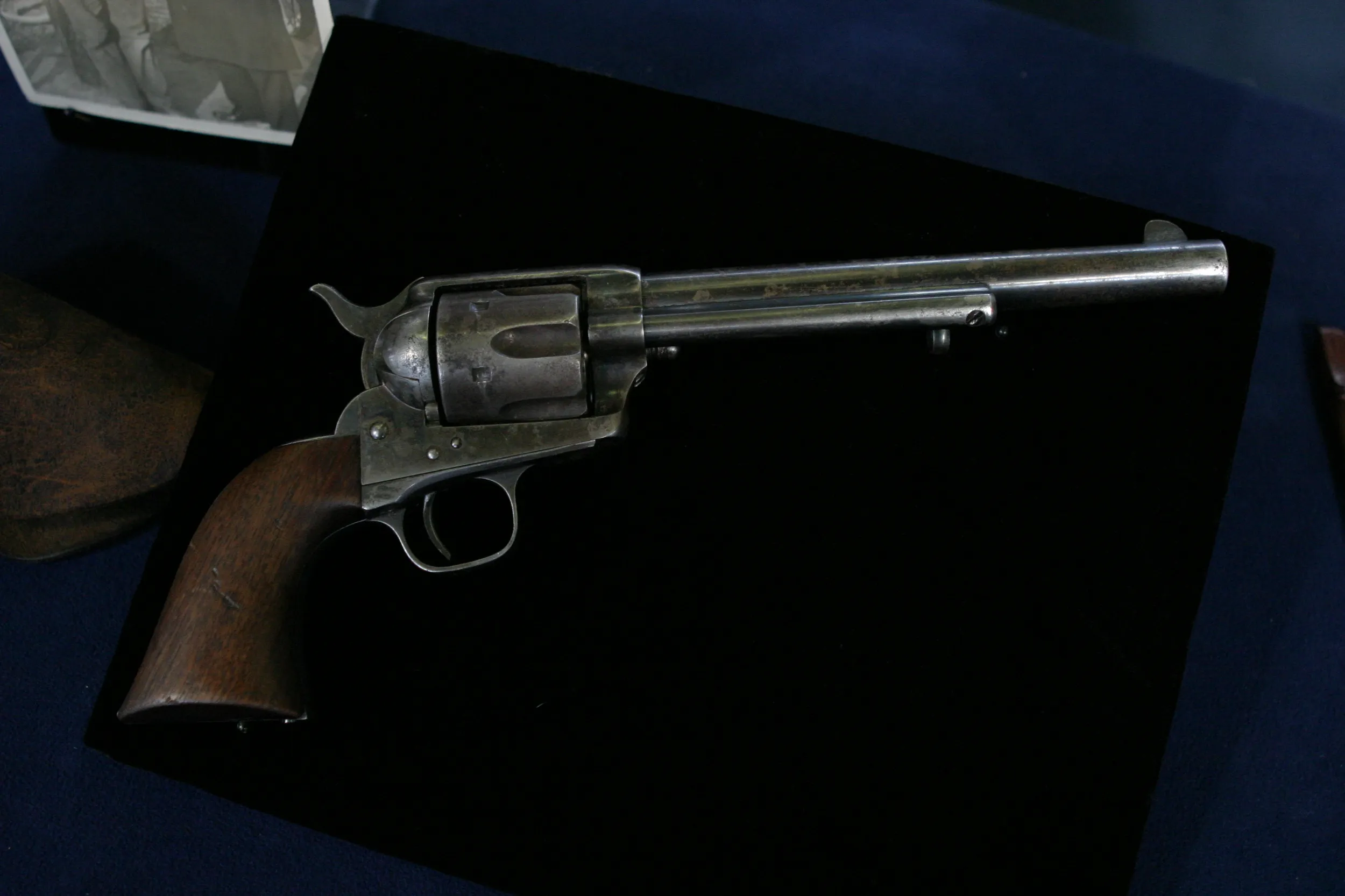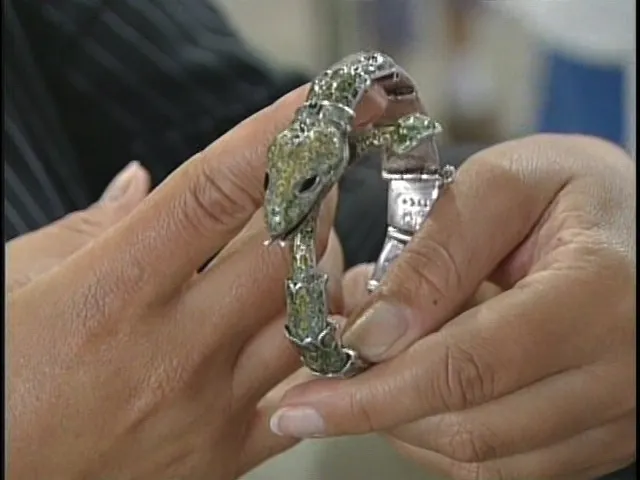GUEST: My late husband purchased it from someone that he knew. He said that he found it in Philippi, West Virginia, after a really bad flood that happened there years ago.
APPRAISER: All right.
GUEST:And he also checked with a museum in Philippi, West Virginia, to see if they knew anything about it, and they said they lost a lot of items during that time, but they wasn't sure if it was something from their museum or not. So we've been trying to find out some information about the cup for years, but we haven't found anything.
APPRAISER: Oh, really, okay. Well, as we can see, it has been in the wars a little bit, so I can imagine this particular cup sort of tumbling down the stream, as it were, in the flood, because there's all of these sort of dings and dents along the lower edge. It's made in Russia. It's made in Moscow. Okay. In 1860. It's a large beaker, and it displays a lot of the workmanship that is typical of Moscow of that period. So I'll just show you, if you look at the strapwork, all of that's very classically Russian, sort of pan-Slavic style. We've got this building. And then finally you've got this heart shape enclosing the date, 22nd of November 1861. So it's probably made for some kind of commemoration, you know, maybe something to do with the large houses. I mean, oftentimes when you see these, they have Moscow monuments in them like the Kremlin, or something like that, all sort of engraved. So for this to have these two houses, I think, is a little bit more unusual. It's a really good size as well, another thing that sort of sets it apart from lesser ones. The quality of the engraving is also very good on this one. I think if it was to come for auction, this would probably be worth in the region of $800 to $1,200. Okay. If it was in perfect condition, maybe more like $1,200 to $1,800. All right.
GUEST: All right, well, thank you.











